9.2 /10 1 Votes9.2
9/10 Steam Distributor(s) Deca Games | 4.4/5 Kongregate 5/5 Facebook Initial release date 20 June 2011 Publisher Wild Shadow Studios | |||||||||||||||||||||||||||||||||
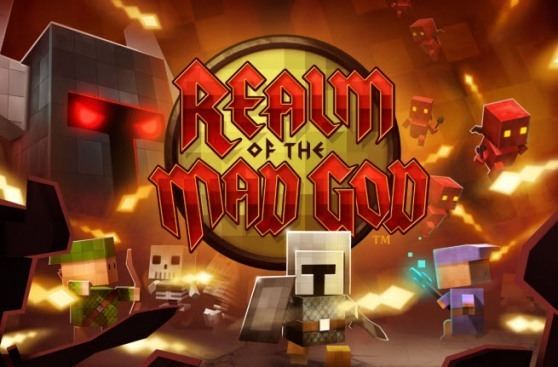 | ||||||||||||||||||||||||||||||||||
Genre Massively multiplayer online role-playing game Similar RuneScape, Trove, Crowfall, Albion Online, Pantheon: Rise of the Fallen | ||||||||||||||||||||||||||||||||||
Realm of the mad god
Realm of the Mad God is a massively multiplayer online shooter video game created by Wild Shadow Studios (acquired by Kabam in June 2012, and later sold to Deca Games in July 2016) and Spry Fox. It was in public beta from January 2010 and the browser version launched on June 20, 2011. On February 20, 2012 the game was made available on the digital distribution platform Steam for Microsoft Windows and OS X.
Contents
- Realm of the mad god
- Let s play realm of the mad god ep 104 it s raining white bags
- Gameplay
- Development
- Reception
- References
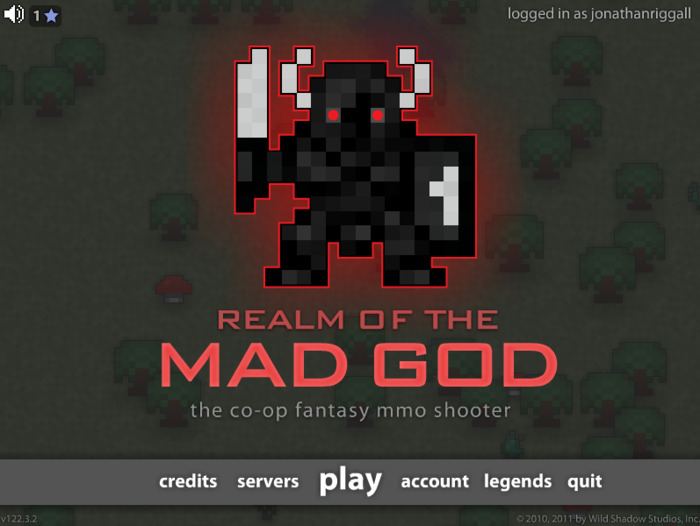
The game has been described as a "massively-multiplayer cooperative bullet hell shooter" with an 8 bit pixelated art style. Players control characters who have been transported to the realm of Oryx (the titular Mad God) to become food for his many minions and abominations, which the players must dispatch. Central to the design of the game is the fact that character death is permanent. Upon death, the player's character is lost along with all carried equipment, although the player may store a number of items for safekeeping in a limited capacity vault away from danger. Different character choices in class also help make the game more diverse and help to support teamwork.
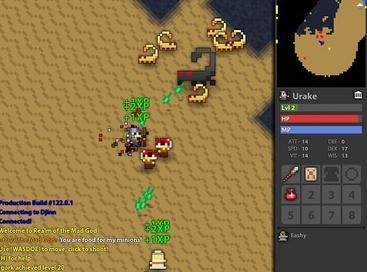
The game is free-to-play with optional in-game micro-transactions. Items which can be bought with optional transactions vary from high-level equipment, pets that provide aid to the player (by attacking enemies, paralyzing enemies, healing the character, restoring the character's magic points, and acting as a decoy), increased storage space, and aesthetic features such as skins, cloths and dyes.
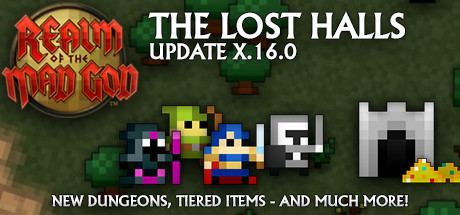
This game client is written in Flash and can be played in-browser on the official site, on Kongregate, or it can be downloaded from the Google Chrome Web Store. Realm of the Mad God is also available on Steam.
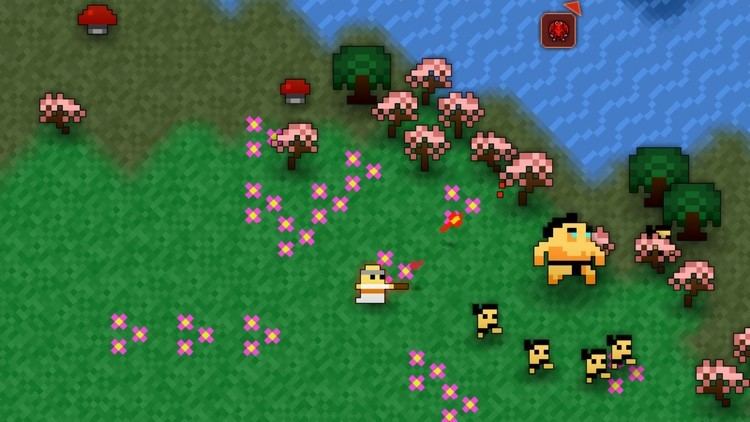
Let s play realm of the mad god ep 104 it s raining white bags
Gameplay

The HUD on the right-hand side displays a mini-map of the player's current server as well as the current character's statistics and inventory. The mini-map of the realm is initially blank, but areas can be revealed as a player traverses through the map. Player and NPC chat appears the lower left corner.

The game consists of players shooting projectiles from their weapons and destroying enemies to earn experience, fame, and equipment. A character moves around using the WASD keys (though other controls can be chosen) and uses the mouse to aim and clicks to shoot. Contrary to usual practice in MMOs, the experience for killing monsters is awarded in full to each player present, rather than split. Because of this, it is generally advantageous to group up when fighting enemies. Players also have the ability to instantly teleport to any player on the map under a cooldown of 10 seconds.
After a certain amount of experience has been earned, the player levels up and their attributes are raised, allowing them to become stronger, fight more powerful enemies, and unlock more classes. The maximum level a player can achieve is level 20. The player can then gain "fame" on their character, which eventually grants permanent stars that indicate accomplishment. If enough fame is earned for a character, it may be placed on the game's leaderboard upon death. Character death is permanent, meaning that the character's items and statistics are lost. When a character dies, the amount of fame earned is tallied and added to the player's overall balance and can be used to purchase certain items in-game.
Players begin their game sessions in the Nexus, a safe haven which can be teleported to at any time. In the Nexus, players may either buy consumables using gold purchased with real-life money or they may trade with another character. The Nexus allows players to teleport to "realms" (game map instances present on the server). Each of these realms are named after powerful monsters in the game (i.e. Medusa, Djinn, Cyclops, Beholder). The capacity of each realm is 85 people at once, and a full realm cannot be entered until a player in it dies or leaves. However, if many players attempt to enter a realm at the same time, the player count can exceed 85.
During gameplay, the player is directed to "quest" monsters which are indicated by a red marker at the edge of the game window. As their character levels up in the realm, they are guided from the "Beaches" and "Lowlands" areas at the edges of the map, through the "Midlands" and "Highlands," and to the more difficult "Godlands" in the center of the map. The Godlands hosts powerful monsters known as the Gods of the Realm. Completing certain quests allows "event" bosses to spawn, which can be killed to obtain higher-tier loot and open portals to the rarest dungeons.
Killing high-level monsters can grant the player permanent stat boost potions, which are rare and exist in eight variations that correspond to the major attributes (life, mana, vitality, wisdom, defense, dexterity, attack, and speed). Consuming stat potions allows the player to improve their characters stats after reaching the highest level, which can be done until the attribute is maxed out (indicated by its text turning gold). Upon death, the size of the grave left behind corresponds to the number of stats maxed. Items could previously be retrieved from graves, but this functionality was removed as it led to players luring others to their doom to loot their graves.
Once enough quest heroes and event bosses are defeated in a realm, players are teleported to Oryx's Castle where they must face the Mad God himself and his minions. If Oryx is defeated, he escapes to the Wine Cellar, another dungeon which can be accessed by a rare in-game item, where players may fight him again and finally destroy him. The rewards of the Oryx boss fights are some of the rarest and strongest equipment available in the game.
The 14 classes currently available are Wizard, Priest, Archer, Rogue, Warrior, Knight, Paladin, Assassin, Necromancer, Huntress, Mystic, Trickster, Ninja, and Sorcerer. Players begin with only the Wizard class unlocked and successively unlock the remaining classes as they gain experience with each class. There are 8 main stats, defense, attack, speed, dexterity, vitality, wisdom, mana, and life. Each class has its own weapon, armor and ability specifications, base statistic averages and statistic caps. For example, Warriors, Knights, and Paladins have high defense and are the only ones that can use swords and heavy armor, while the Assassin, Rogue and Trickster have the highest potential movement speed and dexterity (rate of fire) statistics and can only use daggers and hide armor.
Items are classified into tiers, with higher tier items having better stats. Tiers range from T0-T12 for weapons, T1-T13 for armors, T0-T6 for rings, and T0-T6 for abilities. Some items are un-tiered, giving them a special classification. These items are typically unique, with examples including limited use items, powerful weapons, armor, rings, abilities, and April Fools' Day accouterments. The best items appear in special bags, known as White bags, Purple bags, Cyan Bags, or Potion Bags. These bags are will only drop for players who have delivered a certain percentage of the damage to a monster and can be seen and picked up only by the player it dropped for. Un-tiered (UT) items are "soulbound" as well, meaning it is unable to get picked up by any other player or traded to another player.
The game features guilds, each allowing for a maximum of 50 players. A guild costs the founding player 1000 fame to name and create, and has a guild hall which can be accessed by members of the guild. Upon a member's death, guild fame is earned proportionally to the amount of fame that the player earned. Guilds can buy upgrades such as larger guild halls and cosmetic features with the guild fame.
Development
The game was originally created by Alex Carobus and Rob Shillingsburg, founders of Wild Shadow Studios, for TIGSource's "Assemblee Competition" in October 2009, which limited the competitors to a very small sample of art resources. The developers described the aim of the game was to "shake things up by breaking as many MMO ‘rules’ as we could" It was noticed and received a good response from players, prompting the developers to work on a full game. The game was finally launched in a beta stage on January 10, 2010.
Following the initial launch, Spry Fox joined the development team, helping bring the game to a full release out of beta on June 20, 2011.
To help fund the game's development, optional microtransactions were added to the game, drawing a mixed response from players. The developers defended the microtransactions, saying "they seemed like the most convenient, customer-friendly way to pay for the game... those that passionately love the game, can spend as much as they want, helping us to grow the game over time."
The game has been receiving updates "every few weeks" since its release, with additions including "dungeons, new character classes, hundreds of items and monsters, bank space, pets, clothing, guilds" and more.
On February 20, 2012, the game was made available on digital distribution platform Steam.
After a year of post-release game development, Wild Shadow Studios were acquired by Kabam in June 2012, with part of the deal being that Spry Fox sold their stake in the game to Kabam. Wild Shadow co-founders Alex Carobus and Rob Shillingsburg both left to pursue other opportunities after the acquisition, while Wild Shadow employee Willem Rosenthal stayed on the development team through the transition until June 2013.
On June 23, 2016, Kabam announced that they would be transferring Realm of the Mad God to Deca Games on July 15.
Reception
Realm of the Mad God received generally positive reception from critics, with a Metacritic rating of 82/100 and GameRanking rating of 85.6%.
IGN gave the game a score of 8/10, stating that "this unusual free-to-play MMO hybrid is worth every second of your spare time", criticising, however, the controls, saying "it's a shame that the controls aren't as tight as they should be for the arcade-style shooter gameplay." Eurogamer gave a rating of 9/10, calling the game "superb" and "the perfect game for people who love the idea of raiding, but can't afford to invest the time all MMOs require before the really good stuff", and PC Gamer described the game as "Unrepentantly simplistic and fun", and "one of the most distinctive multiplayer experiences around" in their 89% score review.
RPGFan criticised the simplistic nature of the game, saying "the game currently feels a little bare-bones", adding, however, that "with almost no downtime, a true sense of cooperation, and constant challenge, RMG is an MMO that never grows stale" scoring the game 78% overall.
